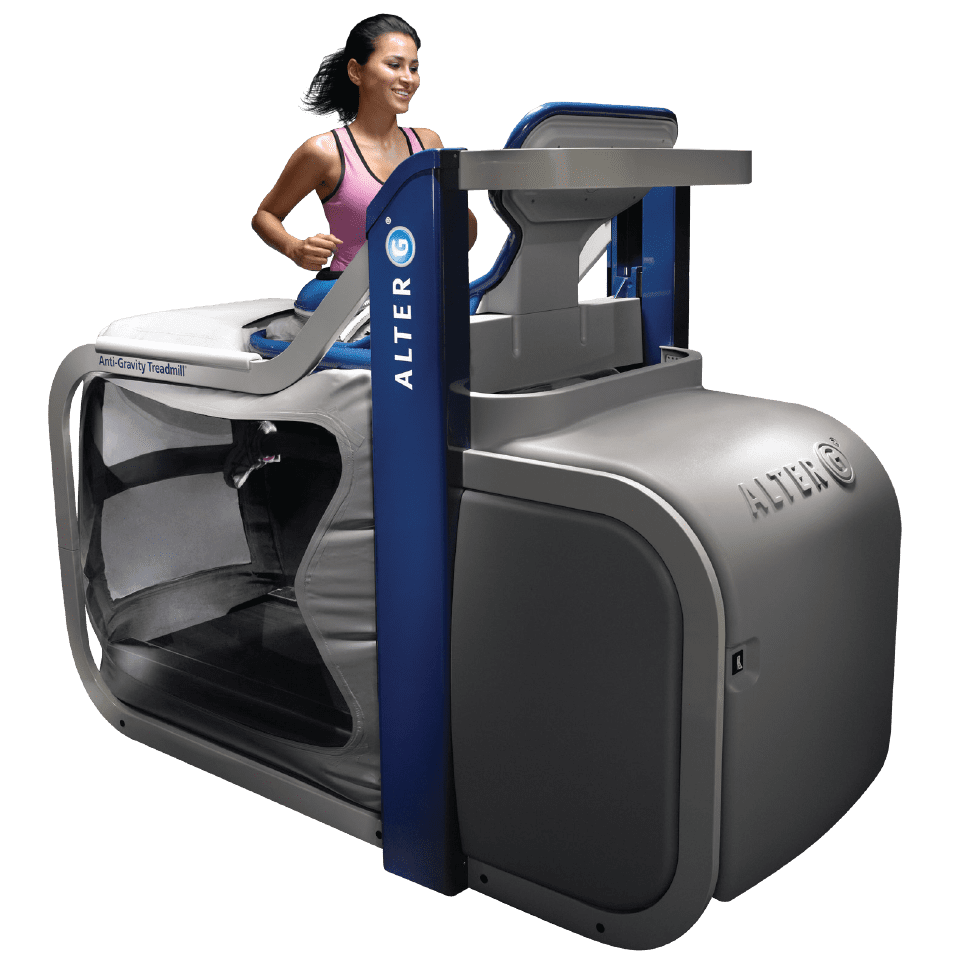Managing Mobility with Low-Impact, Pain-Free Movement
What Is the AlterG Anti-Gravity Treadmill?
The AlterG Anti-Gravity Treadmill is a rehabilitation treadmill that uses NASA-patented differential air pressure technology to help athletes, seniors, individuals with orthopedic or neurological conditions, and those with chronic conditions like obesity enhance their mobility.
Why You Might Need It
The AlterG minimizes pressure and pain by “unweighting” users by up to 80% of their bodyweight. The unweighting can be adjusted throughout the recovery process to fit the specific needs of the patient. Users can progress from little-to-no weight-bearing movements in initial recovery stages, all the way up to full weight-bearing exercise.
The rehab technology can be beneficial for nearly anyone who has suffered from an injury to the hip, knee, foot, or ankle, or for those who can’t manage full-bodyweight physical activity. It is also advantageous for those who have undergone a lower extremity surgery, and athletes looking to return to their pre-injury peak quickly.
With an injury or surgery to a lower extremity, overly aggressive physical activity too soon can lead to compensatory habits. These habits can negatively affect a person’s natural gait and even lead to additional problems like re-injury.
By allowing each person to be treated at their own pace with the proper movement, they are able to progress more quickly, correctly, and completely.
How It Works
An anti-gravity treadmill user is zipped into the air chamber from the waist down. When the chamber is inflated with air, it unweights users, meaning the air pressure in the chamber physically lifts them off the treadmill surface. This relieves pressure on the lower extremities. The amount of air pressure used to inflate the chamber is altered by the attending doctor and is calibrated based on the patient’s weight.
Benefits of the AlterG Anti-Gravity Treadmill
For individuals who have limited mobility, the AlterG is an effective way to quickly improve their range of motion and increase muscle strength while minimizing risk of injury. Studies show that proper, doctor-approved physical activity prevents atrophy (degeneration of cells) of supporting muscles while improving mobility.



